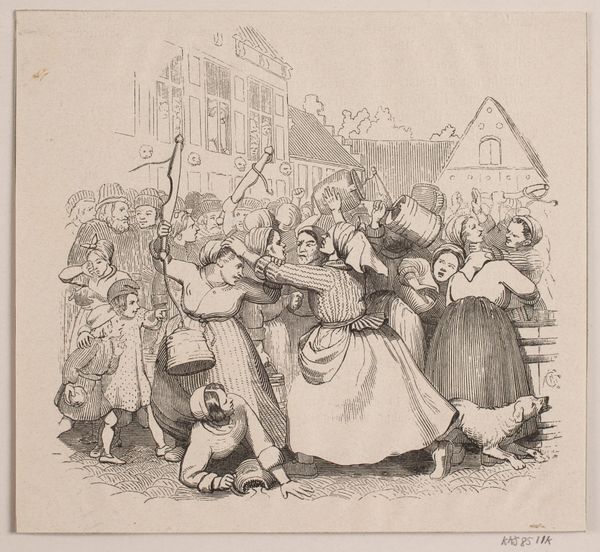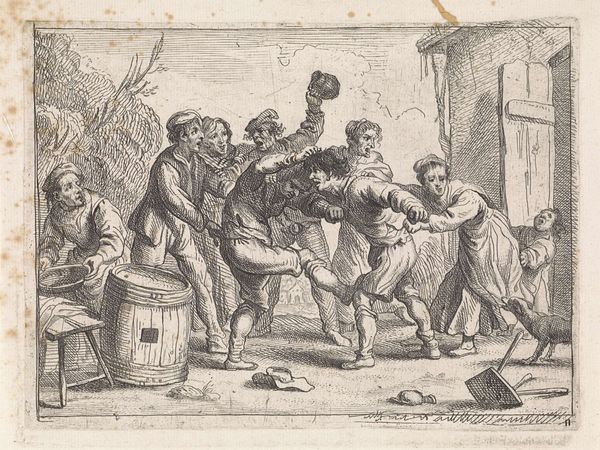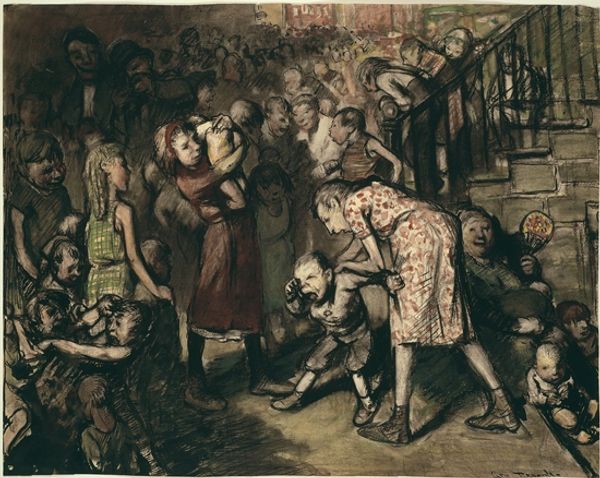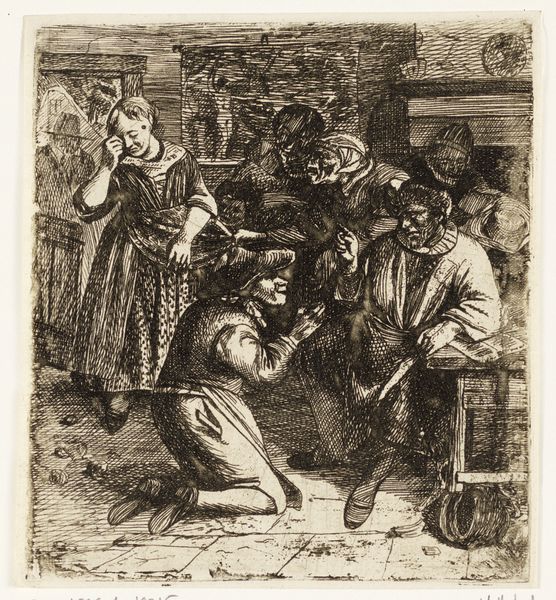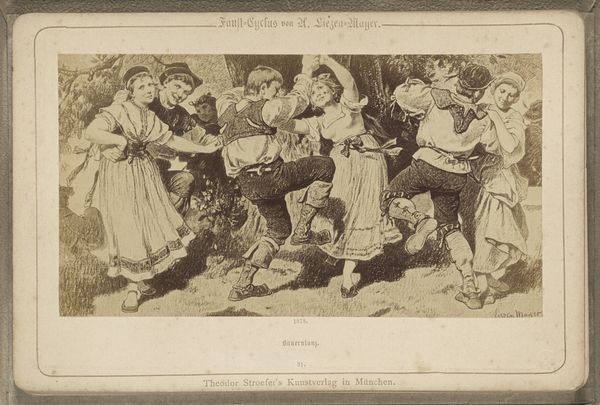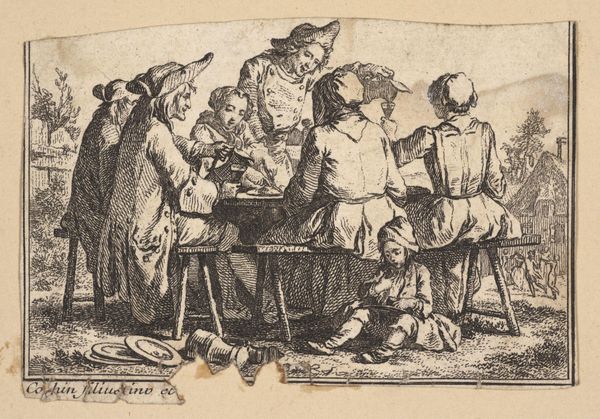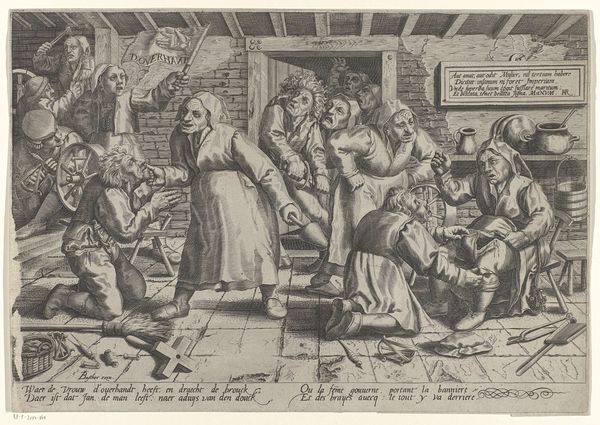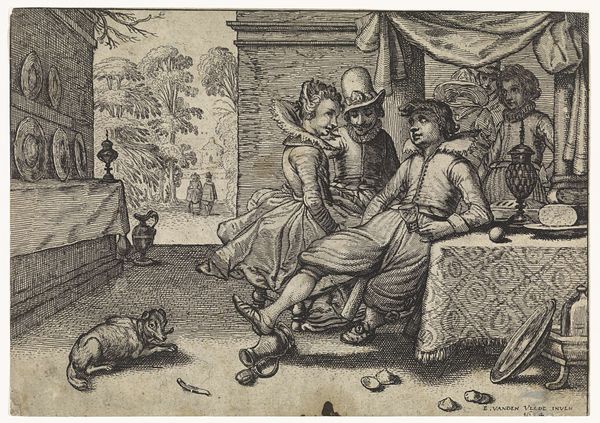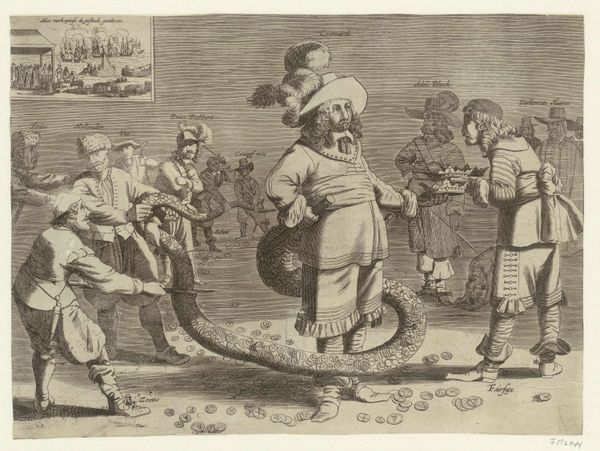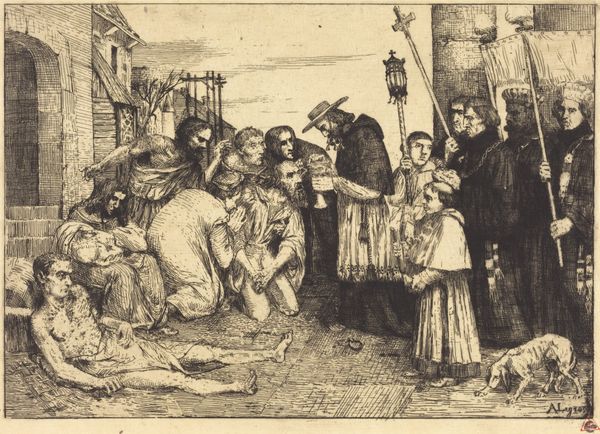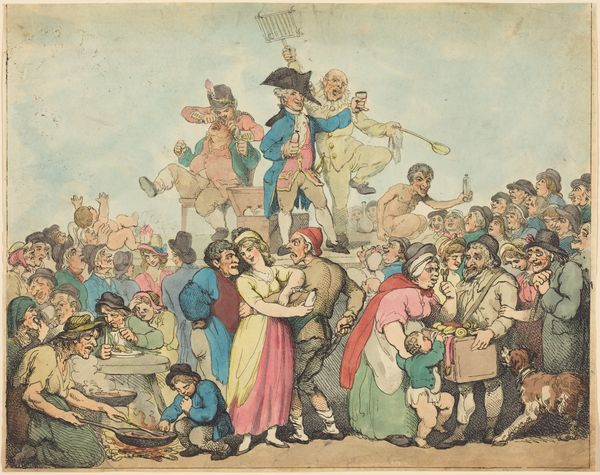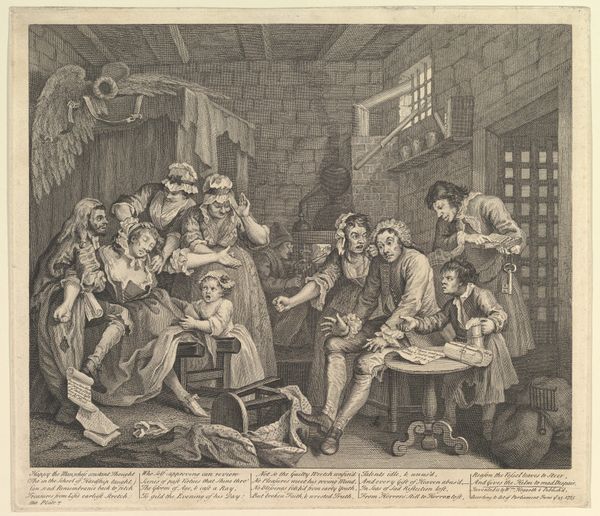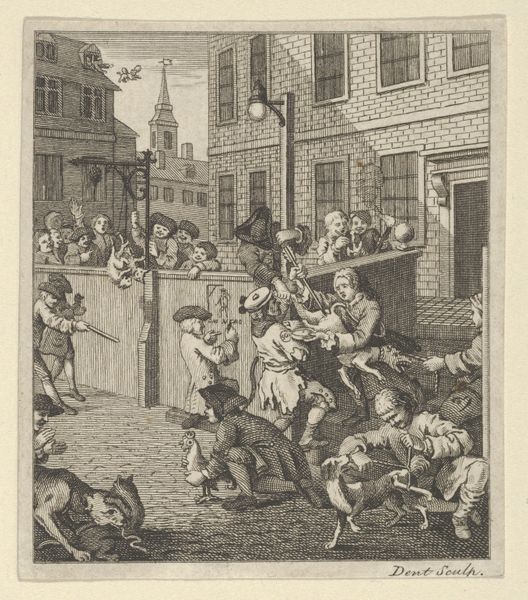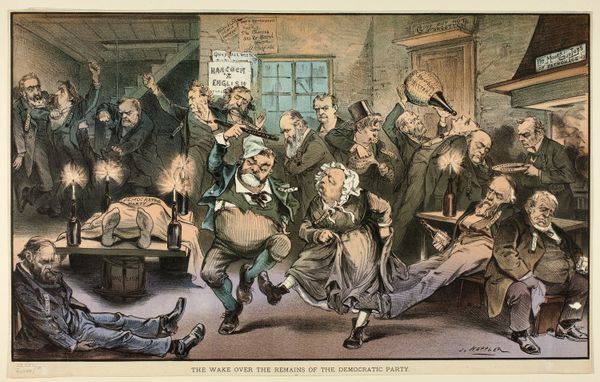
Een man die zijn vrouw had geslagen wordt in de Vinkestraat te Amsterdam door een groep vrouwen bestraft, 1768 1768
0:00
0:00
painting, watercolor
#
narrative-art
#
painting
#
figuration
#
watercolor
#
coloured pencil
#
watercolour illustration
#
genre-painting
#
history-painting
#
watercolor
Dimensions: height 189 mm, width 263 mm
Copyright: Rijks Museum: Open Domain
Curator: It’s quite a scene isn’t it? What’s your initial reaction? Editor: Chaos! And... unpleasant. All these figures crowded together enacting what seems like mob violence. I’m getting a distinct visceral sense of communal rage and... public shaming. Curator: Indeed. What we are looking at is "Een man die zijn vrouw had geslagen wordt in de Vinkestraat te Amsterdam door een groep vrouwen bestraft, 1768," or in English "A man who beat his wife is punished by a group of women in the Vinkestraat in Amsterdam, 1768" a watercolour by Anthonie Drost. The materials themselves—the relatively humble watercolour and the small scale—suggest this wasn't intended as some grand history painting but perhaps a more immediate record of a specific event or sentiment. Editor: It's fascinating to consider how those constraints shaped the final artwork. Look at the tools they're using: a broom, a shoe, what looks like a ceramic pitcher. Very domestic objects transformed into instruments of retribution. The imagery really emphasizes the violation of domestic space that wife-beating represents. The broom is like a scepter of female power re-establishing order, however brutally. Curator: Precisely. The work itself points to the collective labour involved in maintaining social order, even when that order is challenged or disrupted. Think about the costuming. Plain, everyday clothes signal these are ordinary women, laborers probably. What statement is the artist trying to make about the value or labouring-class people, in a way that elevates these workers, especially when looking at women? Editor: I see so much more now in the arrangement. You draw attention to how gender stereotypes affect how things get valued or devalued. To consider this watercolour also in light of the tradition it evokes, there are parallels to the Judith beheading Holofernes iconology of women's agency and the overturning of power—though decidedly more mundane. Curator: These parallels that emphasize community resistance in Amsterdam during this historical moment and these visual tools Drost employs create not just an artwork, but also something of a historical record with the same message throughout. Editor: A fascinating point to conclude on. I'm struck by how effectively the artist has woven together individual stories and broader social meanings using potent, familiar iconography.
Comments
No comments
Be the first to comment and join the conversation on the ultimate creative platform.
